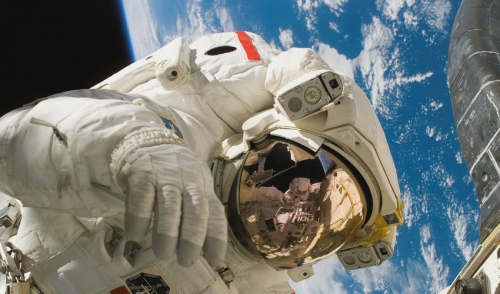{article.name}
Stay Informed
Horses and Astronauts: The Effects of Inactivity on Bone Strength and General Well Being

- Share this:
- Share on Facebook
- Pin on Pinterest
- Tweet on Twitter
What do horses and astronauts have in common? Early in the space program astronauts were found to have significant loss of musculoskeletal strength and other health issues after spending time in space. Horses kept in confinement for extended periods have been found to have similar problems, with losses in bone strength, joint health and reduced function in other organ systems. Both horse and human bodies were designed for movement, and anything that limits activity can have a negative impact on strength and overall health.
Wild or feral horses routinely travel 3 to 10 miles per day to graze. Herds of horses also participate in group activities of mock fighting chasing, bucking and rolling. They spend the majority of the day in motion. This is in stark contrast to the activities of many stabled horses. Horses kept in stalls may stand around for 23 hours a day, with possibly one hour of riding or turnout. Because this is not what horses were designed to do, inactivity can have a negative effect on their physical and mental soundness.
Bone is a living tissue that must be “stressed” by movement and concussive forces to maintain strength. When gravity and activity are lacking, significant losses in musculoskeletal strength occur quickly and cannot be overcome by nutritional supplements. Researchers at Michigan State University have conducted investigations into the effects of confinement on bone mineralization in horses. Stalled horses, from weanlings to mature horses, were reported to have a lower bone mineral content (BMC) than their pastured counterparts as early as 28 days into the study. Weanlings housed in stalls had lower BMC and smaller cannon circumference at 28 days than weanlings maintained in pasture full time and those pastured for 12 hours and stalled for 12 hours a day. Horses pastured 12 hours a day had similar measurements to those pastured full time. After 28 days of total confinement in stalls, weanlings began to show increased activity, rearing, bucking and running around in small circles in their stalls. Interestingly, that level of activity resulted in increased BMC measures by day 56 of the study.
Highly conditioned horses at Virginia Polytechnic Institute and State University were kept stalled for 12 weeks and walked on a mechanical walker for two 30-minute sessions every day. Bone mineral content began to decline at 3 weeks into the study, with more significant loss by 12 weeks. An earlier study reported that short, vigorous sprints were the most effective way to increase bone strength. It was evident in this study that an hour a day on the walker didn’t combat bone demineralization. In another study, horses being conditioned experienced increased BMC when fed a higher calcium diet (0.69% vs. 0.35%). However, feeding higher calcium didn’t prevent the decline in BMC in stalled horses in the latter study, indicating that diet supplementation cannot overcome lack of activity.
Inactivity is detrimental to the entire musculoskeletal system, including bones, muscles, joints, tendons and ligaments. People confined to bed rest for a week to 9 days have been shown to lose as much as 20% to 30% of original muscle strength. Ligaments have been found to undergo biomechanical changes as early as 2 weeks after immobilization. Joint cartilage, which does not have its own blood supply, relies on synovial fluid to provide nutrients. This action requires joint movement. When horses stand still for most of the day, nutrient delivery to joint cartilage is diminished and may damage joints.
Along with the potential problems confinement presents for the musculoskeletal system, the digestive system may be affected as well. When the body doesn’t move, the motility of the digestive system declines, which can increase the risk for impaction colic in horses. Confinement also tends to increase the incidence of stress-related behaviors. Cribbing, weaving, kicking and even gastric ulcers have been associated with being housed in stalls. There is no doubt horses living predominantly in stalls potentially have more health problems than horses kept in pasture for most of the time. The research shows that living in a stall and walking on a walker for 2 hours a day just doesn’t do the job.
While many horse owners cannot keep horses in herds out on pasture, the research suggests that consistent, ample turnout and regular exercise can contribute significantly to keeping horses happy and healthy.
Special Offers
We are constantly adding new specials to our site. Be sure to check back often!


Comments